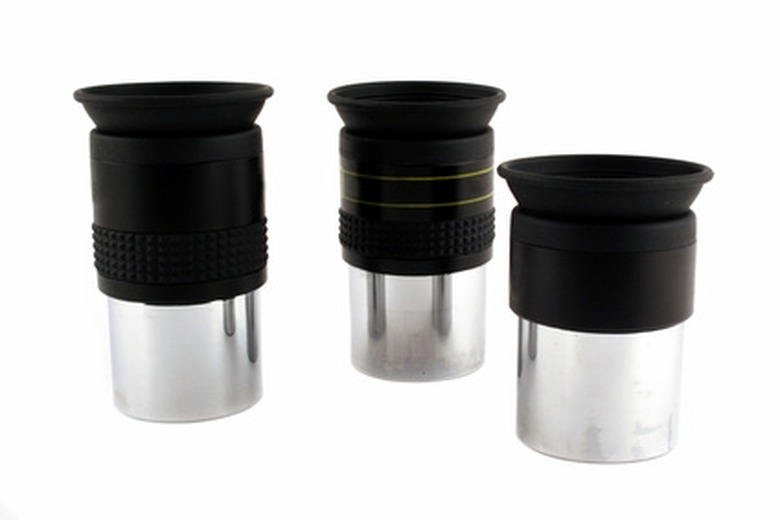How To Use A Bushnell Reflector Telescope
Bushnell reflector telescopes provide breathtaking views of the night sky. Based on Isaac Newton's original design, Newtonian reflectors use a two-mirror optical system to gather light and direct it to a magnifying eyepiece. Bushnell includes a tripod, finder scope, two magnifying eyepieces and a Barlow lens with its reflector telescopes. The low-power eyepiece works best when observing large, extended objects, such as star clusters and galaxies. Use the high-power eyepiece when observing the moon and planets.
Step 1
Lay the tripod on the ground. Loosen the thumb screws on each leg, and extend all three legs to a comfortable viewing height. Tighten the thumb screws on each leg after verifying that you extended each leg the same height.
Step 2
Stand the tripod upright on a flat, level surface. Loosen the retaining clamps on the tripod mount. Attach the telescope to the mount and tighten the retaining clamps to secure it in place.
Step 3
Attach the finder scope to the telescope tube. Insert the finder into the finder scope mounting bracket and tighten the thumb screws.
Step 4
Aim the telescope at a bright object, such as the moon or a star. Look through the finder scope and adjust the height and direction of the telescope to center the object into the finder scope.
Step 5
Insert the low-power eyepiece into the telescope's focuser. Look through the eyepiece. Turn the focus knob on the focuser to sharpen the image.
Step 6
Align the finder scope if the object is centered in the finder scope but not the telescope's eyepiece. Center the object in the eyepiece and adjust the finder scope's adjustment screw to center the object in the finder scope's crosshairs.
Step 7
Remove the low-power eyepiece and insert the high-power eyepiece to increase the magnifying power of the telescope. Insert the Barlow lens between the focuser and the eyepiece to further multiply the magnifying power.
Things Needed
- Bushnell reflector telescope
- Tripod
- Finder scope
- Magnifying eyepieces
- Barlow lens
TL;DR (Too Long; Didn't Read)
The images in a reflector telescope appear upside down and backward because of the mirrors used in the Newtonian design. Pick an observing location away from porch lights, street lights and other forms of local light pollution. Rural areas offer the best observing sites because of their distance from the light domes generated by the combined light pollution of a town or city.
Warning
Observing the sun through a telescope will seriously damage your vision.
Cite This Article
MLA
Douglas, Joel. "How To Use A Bushnell Reflector Telescope" sciencing.com, https://www.sciencing.com/use-bushnell-reflector-telescope-7516307/. 24 April 2017.
APA
Douglas, Joel. (2017, April 24). How To Use A Bushnell Reflector Telescope. sciencing.com. Retrieved from https://www.sciencing.com/use-bushnell-reflector-telescope-7516307/
Chicago
Douglas, Joel. How To Use A Bushnell Reflector Telescope last modified August 30, 2022. https://www.sciencing.com/use-bushnell-reflector-telescope-7516307/
